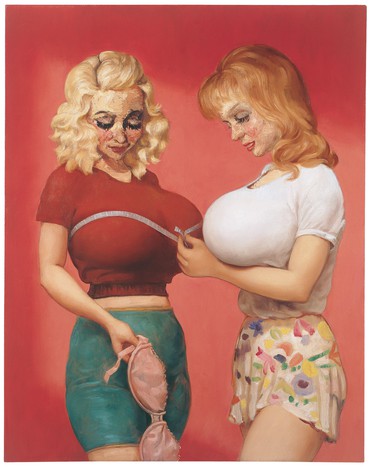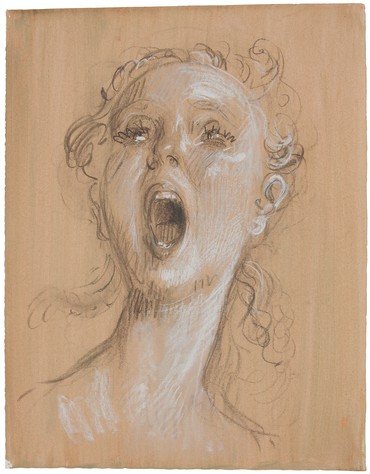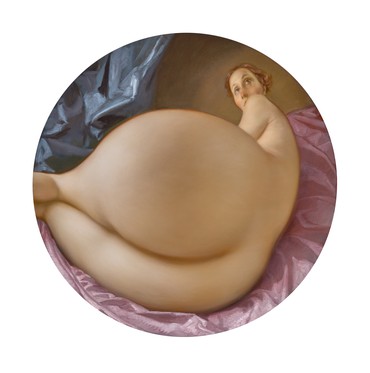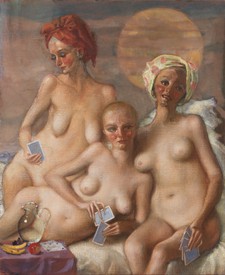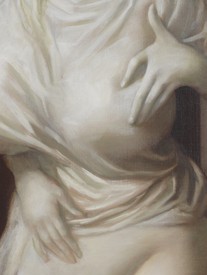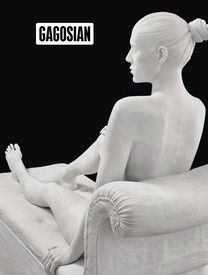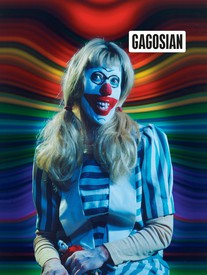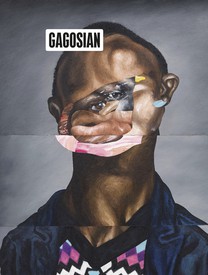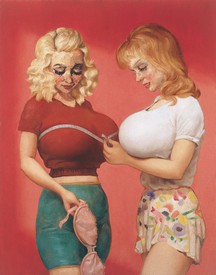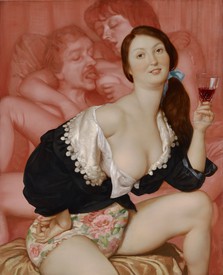This is the one that I made the painting from. I had done some goofier versions of it, but it wasn’t until I did a much more subdued, almost trite drawing like this that I saw how a drawing of a nutty idea could turn into a painting. It is actually a very good example of how an idea totally changes going from drawing to painting. One of the things I was thinking about was genre painting—about [François] Boucher and how everybody looks the same, like a separate race of people. And so I just thought, “Ok, in this one their attributes are these big breasts.” Another thing about genre painting is how it plays around with what the subject of the painting is. It’s like the [Jean-Baptiste-Siméon] Chardin painting of the boy staring at the spinning top. It’s not a painting of a boy and it’s not a painting of a spinning top. You are seeing someone who is also kind of obsessing visually, so there’s a kind of hall-of-mirrors effect. That, paired up with the idea that big breasts are something that you stare at.
This was a study of Rachel’s face for the painting called Thanksgiving, where she’s being fed some soup; I think I originally got the idea from The Scream. I did several studies of this, and I vacillated between having her look scared or looking like a baby being fed, but ultimately I picked this one where she looks more like a bird being fed—which in the painting is then echoed by a turkey in the foreground waiting to be stuffed. The whole thing ended up being an allegory about Rachel being pregnant with our first child—but it wasn’t even something I tried to do. She got pregnant right when I started the painting and gave birth just a couple days after I finished it.
There is a famous Botticelli painting in the Uffizi that I love of the Virgin and Child with a bunch of singing angels. It’s a big tondo, and it has a slight convexity, a bit of stretching around the image that’s very subtle, and it has this feeling that has always just blown my mind. I also loved M.C. Escher when I was a teenager—I made my first self-portrait when I was sixteen with me reaching toward one of those mirror balls—so I’ve thought for a while about doing a nude in a convex mirror.
I also thought of it as a kind of reversal or parody of that famous Laura Mulvey essay about the gaze—a disarming of my worries about the creepy invasive male eye. I made three versions of this drawing. This is the one I used for the painting—which ended up on the book cover.
Artwork © John Currin. Photos by Rob McKeever

